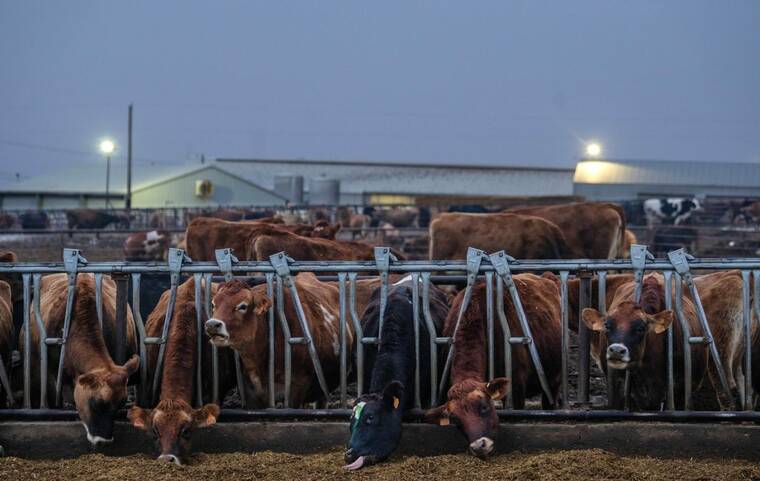U.S. milk supply to be tested for bird flu virus

RUTH FREMSON / NEW YORK TIMES / NOV. 28, 2023
Dairy cows feed through a fence on a dairy farm in Washington’s Yakima Valley in 2023. The U.S. Department of Agriculture said today it will begin testing the nation’s milk supply for the bird flu virus known as H5N1.
The U.S. Department of Agriculture will begin testing the nation’s milk supply for the bird flu virus known as H5N1, nearly a year after the virus began circulating through dairy cattle, the department announced today.
Under the new strategy, officials will test samples of unpasteurized milk from large storage tanks at dairy processing facilities across the country.
Farmers and dairy processors will be required to provide samples of raw milk on request from the government. And farm owners with infected herds will be required to provide details that would help officials identify more cases and contacts.
The rules were first floated in October and were supposed to be implemented in November. The first round of testing is now scheduled to begin the week of Dec. 16, according to the announcement.
The new strategy is a departure from the voluntary guidance that the department had issued during the outbreak. Many dairy farms have not complied with voluntary testing of milk or of dairy workers, leaving federal officials in the dark about how widely the virus might have spread.
Many experts in the United States and elsewhere, including with the World Health Organization, have sharply criticized the lack of testing of cattle and of people who may be infected with the virus. The virus does not yet spread easily among people, but every untreated infection is an opportunity for it to gain the ability to do so, experts have said.
Don't miss out on what's happening!
Stay in touch with breaking news, as it happens, conveniently in your email inbox. It's FREE!
The virus replicates easily in the udders of cows, and raw milk from infected animals contains very high levels of the virus. At least some farmworkers are thought to have become infected from droplets of milk, perhaps through their eyes.
No one has yet been known to become ill from drinking raw milk, although farm animals, including cats, are thought to have died after consuming contaminated milk. Pasteurized milk sold to consumers has already been shown to be free of the virus.
The new rules are an attempt to gain control over the outbreak, Agriculture Secretary Tom Vilsack said in a statement.
The strategy “will give farmers and farmworkers better confidence in the safety of their animals and ability to protect themselves, and it will put us on a path to quickly controlling and stopping the virus’s spread nationwide,” he said.
The program will begin in six states: California, Colorado, Michigan, Mississippi, Oregon and Pennsylvania.
———
This article originally appeared in The New York Times.
© 2024 The New York Times Company


 Holy Week & Easter in Aiea || Free Events for All at OSHi! ️️
Holy Week & Easter in Aiea || Free Events for All at OSHi! ️️

